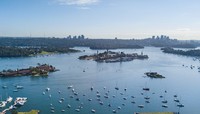Smoother roads ahead for the rental market
- May 31, 2021
While the sales market has grabbed all the headlines with stunning capital growth over the past 12 months, the rental market has been steadily stabilising post-COVID. Here we provide an overview of the current status of the rental market and what we expect to see unfold through the course of this year.

Vacancies and rents stabilise for most suburbs
This time last year we were in the midst of reducing rents and trying to hold onto tenants through a pandemic. Fast forward to today and thankfully we are no longer offering rent reductions and 97% of tenants are back paying their normal rent as per the lease agreement.
That said, the lack of people entering the country has kept rents suppressed with little to no growth over the year. According to SQM Research, Sydney asking rents for houses are up an insignificant 1.7% in the past 12 months while apartment asking rents have declined 5.7% for the year. We have managed to minimise vacancy periods though with our internal vacancy rate sitting at 2.7%, which is below the monthly Sydney average of 3.6%.
In conjunction with rising house prices we’ve seen demand increase for higher-end rentals with properties asking north of $1500 often being snapped up within days of being offered to the market. This movement reflects the wider sentiment that people are seeking refuge in larger and more comfortable properties with less travel and more time being spent at home.
We are continuing to see weaker rents and demand for apartments around the city and city fringe areas. This region has been hit the hardest as a result of the pandemic, with no students entering the country and generally less activity within work spaces and eateries that service this area. While rents are slowly starting to claw back some ground, they are still sitting more than 20% below what was being achieved 18 months ago.
As we move into winter we’ll likely see another unusual period of higher-than-normal movement. Typically we see property movements slow down in the cooler months but given no one will really be travelling overseas we can already see that higher-than-average winter movement is on the cards. Our advice remains to set an attractive and engaging rent to lease your property quickly to a quality tenant through this period.
As people stay at home, stress levels and dissatisfaction have increased
The surge in complaints coming from renters has been astronomical over the past year. With so many people’s emotions being pushed to the limit we’ve seen huge waves of tenants use their property as a conduit to air their personal frustrations, with little regard for the property manager they’re dealing with. Something as basic as a leaky tap may arrive in the form of an aggressive email advising that if it’s not fixed within hours, the tenant will sue the owner and break their lease.
Some of the behaviour we’ve witnessed over the past 12 months has been truly awful and the worst we’ve ever seen in 30+ years of managing property. The era of self-entitlement and playing the victim has ramped up and increasingly tenants feel like they have a right to be incredibly aggressive and rude to either the property manager or landlord. This phenomenon is not exclusive to us, with many agencies across the country experiencing similar behaviour. We understand it’s been a difficult period for people and being within our homes for longer periods has been frustrating, especially if you’re not in an ideal residence. That said, property management has been brutal recently, dealing with significant changes and personal emotions that go well beyond a normal day’s work.
Thankfully, this aggressive behaviour is starting to cool off to a degree but we’ve had an insight into human nature under stress and it wasn’t pretty.
While rents are idle, capital growth has exploded
While rental incomes are either declining or sitting idle, this has been compensated with record low interest rates and surging capital growth. In fact, we started to see some rental yields increase over the past 12 months, often showing a net return of more than 5% for our typical two-bedroom house. We haven’t seen those returns for years.
In the past two months buyer demand for rental properties has surged forward as securing an investment loan near enough to 2% fixed for three years is simply too attractive to ignore. Additionally, local house price growth has been phenomenal over the past 12 months – we’re calling 25%-30% for houses and 8%-12% for apartments.
While rents and tenant behaviours have been sloshing around at the bottom end of the spectrum, investors can take some solace in the fact that the value of their asset has experienced tremendous growth. Additionally, low interest rates have converted some investments into cash flow positive returns or at least minimised the pain of having to reduce asking rents by 5% or so.
Longer-term interest rates start to edge up
As rents start to stabilise along with the overall economy, we have seen the major banks increase their four-year fixed interest rate loans. Up until June 30 this year all the banks have access to a cheap funding facility of $190b from the Reserve Bank which has been the key reason why they’ve been in a position to offer loans sub 2%. That all comes to an end in the next month and as a result investors have raced to lock in three-year fixed rate loans as there will be a 20 basis point or more increase once we tip into the four-year fixed rate period.
As an example, the cheapest three-year fixed rate loan on offer in the market today sits at 1.79%, however the lowest four-year fixed rate is 2.6%. This is quite a difference and it may be time to speak with your bank or broker before this cheap funding facility comes to an end.
New tenancy regulations are still being embedded
At the end of March new tenancy regulations came into effect which were again very pro-tenant. While certain things such as properly managing domestic violence in a rental property were welcomed, there were plenty of implementations that leave landlords exposed.
As recently experienced through the pandemic, investors hold a lot of risk. Thankfully the Government stepped in with a moratorium during the height of COVID to provide people holding a mortgage with the ability to pause loan repayments until they understood how their professional life would be impacted. Pandemic or not, investors take the risk to borrow significant funds in order to offer a property to the market for lease. Right now many imposed regulations seem to ignore that risk and allow tenants to up and leave an investor with a vacant property for some innocuous reasons. We’ve also seen certain people look to manipulate the ‘grey’ areas of the rules which means investing in a property right now is heavily weighted in favour of tenants.
We’re continuing to work with our industry body to tighten up some of the new regulations but it often comes as a surprise to many investors just how quickly a tenant can leave with minimal penalty around breaking a lease or due to a potential sale. These elements are unlikely to change, so it’s important we hold the existing ground.
We only see upside for the area
Gazing ahead, the pandemic has reinforced the lifestyle qualities that our serviced areas offer. There is increasing and improving infrastructure going on all around the Inner West and North Shore right now and it’s slowly coming together. Barangaroo is an outstanding asset to Sydney and its proximity to the Inner West can’t be underestimated. WestConnex, the light rail upgrades, the Fish Market upgrade, ferry services being added to Glebe and Annandale and at some stage the White Bay regeneration will also put the spotlight firmly on our region as one of the most remarkable Sydney districts.
Balmain often pops up on realestate.com.au’s most searched suburbs in Australia, so we know the demand and intensity to get into the area is as high as anywhere else in the nation right now. Right across Balmain, Annandale, Drummoyne, Marrickville and Lane Cove, we continue to experience a surge in demand to create the ideal lifestyle. Even though we’re balancing working from home more regularly, it only reinforces the desire that the suburb you live in sits high on the liveability scale and provides attractions that create a community. We know the areas we service hit all the right targets and the future looks very bright for local property.









